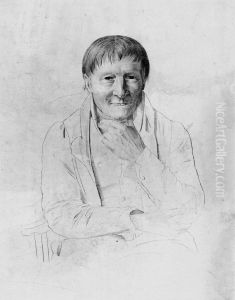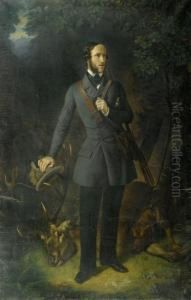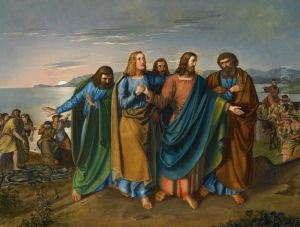Carl Wilhelm Friedr. Oesterley Paintings
Carl Wilhelm Friedrich Oesterley, born on January 5, 1805, in Göttingen, Germany, was a German painter and art historian known for his contributions to Romanticism and his focus on landscape and religious painting. Oesterley was a part of the German artistic movement that emerged in the early 19th century, which was heavily characterized by an emphasis on emotion and the sublime beauty of nature.
Oesterley studied at the University of Göttingen before pursuing an artistic career. His academic background contributed to his meticulous approach to art and his later work as an art historian. He was particularly influenced by the works of the old masters, and this classical influence is evident in his own style, which often featured harmonious compositions and a fine attention to detail.
Throughout his career, Oesterley travelled extensively across Europe, including Italy, where he was deeply inspired by the Renaissance artworks and the Mediterranean landscape. His travels played a crucial role in the development of his artistic style and subject matter. Oesterley's landscapes often depicted the German countryside, imbued with a sense of romantic nostalgia and the divine presence within nature, a common theme in Romantic art.
In addition to his painting, Oesterley was an esteemed art historian. He was a professor at the Academy of Fine Arts in Kassel and later at the Polytechnic School in Hannover. His scholarly work included in-depth studies of German and Italian art, and he published several books on art history that contributed to the academic discourse of his time.
Oesterley's legacy is marked by his dual contributions to both the practice of art and its historical understanding. His paintings can be found in various museums and collections in Germany, and his written works continue to serve as valuable resources for the study of art history.
Carl Wilhelm Friedrich Oesterley died on December 9, 1891, in Hannover, leaving behind a body of work that not only captured the essence of the Romantic spirit but also enriched the field of art history with his scholarly pursuits.


